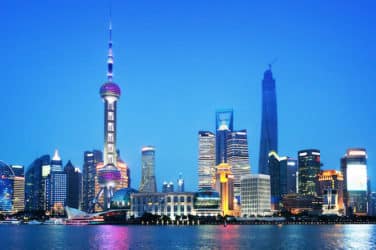
Garry Jones, chief executive of the London Metal Exchange, said the firm’s biggest single growth initiative is to focus on Chinese funds and state-owned enterprises as he unveiled a new trading floor in London.
Jones spoke at a media briefing at the new Ring, the LME’s open-outcry trading floor, after the firm relocated at the beginning of this month. He said the move was necessary as the LME had 82 employees in 2011 and has grown to 350, who were previously split among different buildings. The new office is large enough to include LME Clear, the clearing business which launched in 2014, and has improved video links with Hong Kong Exchanges and Clearing Limited, which acquired the LME in 2012.
“The new promises are more efficient and also provide a better environment for the dealers in the Ring,” added Jones. “Electronic trading in more integrated and we can display more information around the Ring from the LME and from other markets.”
The exchange invested £1m ($1.4m) in enhanced technology, including new wall boards to help integrate Ring and LME electronic pricing and to provide more real-time information. Jones added that the LME is not fully electronic as different clients want to trade in different ways, and it will follow the wishes of market participants.
Simon Van Den Born, global head of metals at Marex Financial Ltd, said in a statement: “It’s important that clients have a range of options to meet their needs. The LME Ring provides a liquidity pool of exceptional depth, visibility and regulatory oversight, which allows clients to execute size in a transparent price-discovery process.”
Clients can trade futures and options electronically on LMEselect, via open outcry in the Ring or through the 24-hour telephone market. Last year 170 million lots were traded on the LME, the equivalent of 4 billion tonnes and $12 trillion in notional value. At the end of 2015, approximately 4.2 million tonnes of material was held on LME warrant in more than 600 storage facilities across 37 locations internationally.
Jones said: “We have one matching engine for all types of trading. LME Clear can look at all positions in real-time and calculate margins in real-time.”
Jones said the growth of the exchange is tied to economic expansion and last year volumes fell 4% less as metals prices fell between 20% and 25%. The LME is looking to expand the types of users who use the platform and to broaden its product range in industrialised commodity markets, particularly by focussing on Chinese funds and state-owned enterprises.
Jones said 28 state-owned enterprises used to be allowed to trade outside China but last year the government gave permission to 145 state-owned enterprises to trade outside the country, including companies such as motor manufacturers. He added: “This is our biggest single initiative and we are hiring people to cover China both here and in Hong Kong.”
The move to a new building is the next step in the modernisation of the metals exchange. In January Hong Kong Exchanges and Clearing Limited announced its strategic plan for the three years between 2016 and 2018, outlining the development roadmap for HKEX and Hong Kong’s financial markets.
C K Chow, chairman of HKEX, said in a statement: “We aim to build new price discovery capabilities, benchmarks and risk management tools in fixed income, currency and commodities to complement our well-established equity and equity derivatives business.”
In commodities the strategic plan includes expanding the suite of products both on the LME and in Hong Kong into adjacent sectors such as precious and ferrous metals, as well as value chain products in the base metals delivery chain and in the steel complex. HKEX will also list LME products in Hong Kong and is undertaking preparatory work for “London-Hong Kong Connect”, a scheme that connects the LME and Hong Kong Futures Exchange more directly.
“After the linkages are in place for “London-Hong Kong Connect”, we plan to extend its scope at a subsequent stage by establishing a mutually beneficial Mainland-Hong Kong “Commodities Connect” mechanism that expands the bridge between the two markets and makes onshore commodities derivatives accessible to Hong Kong and international participants,” said the plan.
Charles Li, chief executive of HKEX, said in a statement: “We see the greater participation of Asian investors as a large untapped opportunity for the LME. In Asia, and especially in mainland China, financial interest in metals is unrivalled, as evidenced by the huge derivatives volumes on Mainland commodity exchanges. Through London-Hong Kong Connect, we aim to bring more of this liquidity to the LME.”
In mainland China HKEX is exploring the creation of a spot commodity trading and financing platform. Li said that in mainland China there are not enough physical users in the futures markets. As a result commodity futures trade like financial futures with price discovery significantly less influenced by the physical market than is the case with the LME.
“If this situation persists, we believe that it will be difficult for Mainland China’s commodity market to truly reflect the Mainland’s influence in global commodity production and consumption,” said Li. “We think this is something HKEX can help address, given our credibility, and the unmatched expertise of the LME in physical metals warehousing and trading.”
The slated spot commodity trading platform on the mainland will be supported by warehousing and a financing platform to easily allow trading from a range of participants such as producers and consumers to trading firms and financial institutions.
“We also see potential to establish and internationalize benchmarks through Hong Kong and the LME,” Li added.
Featured image by Kreepin Deth/Wikimedia Commons under creative commons





